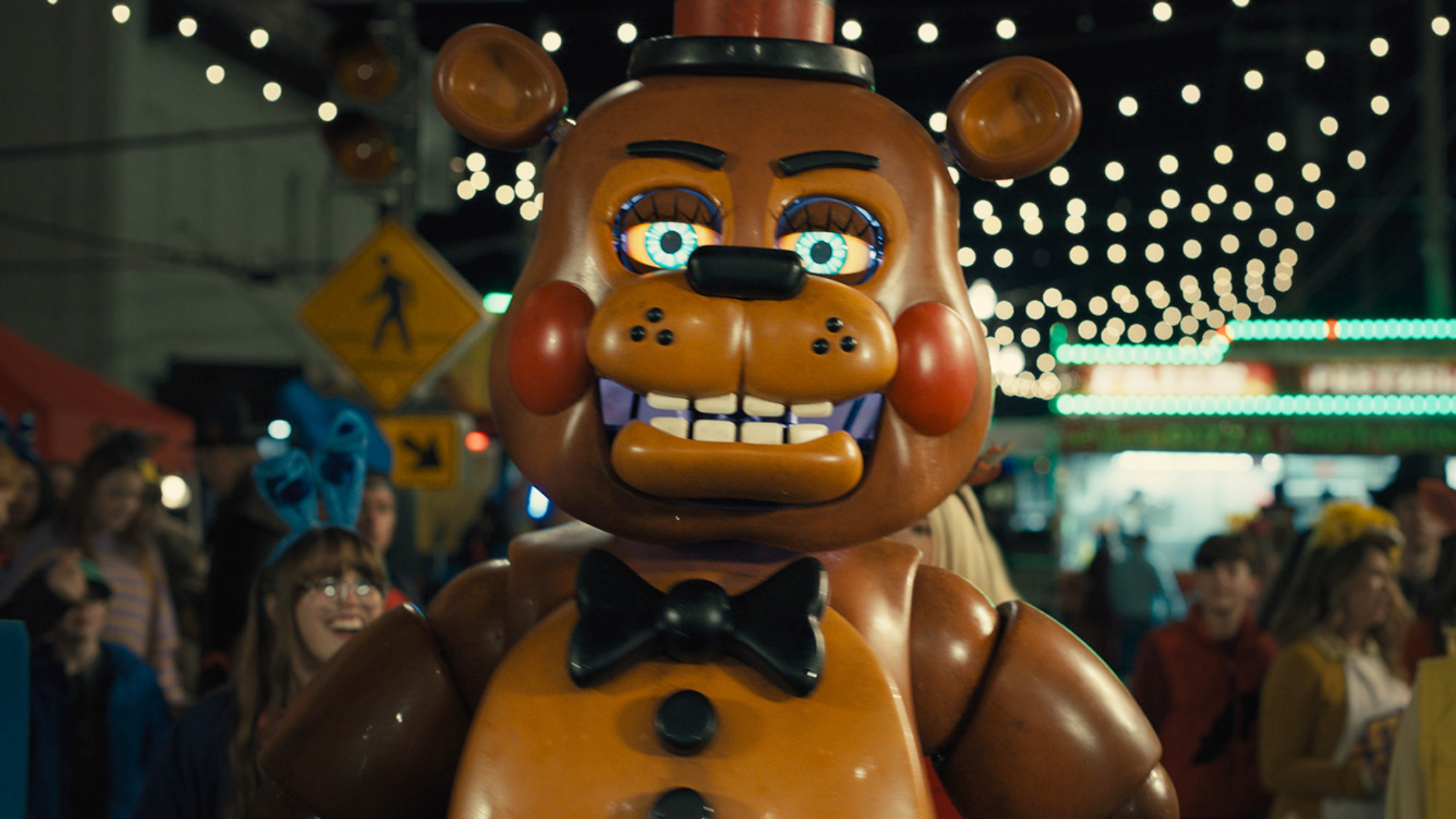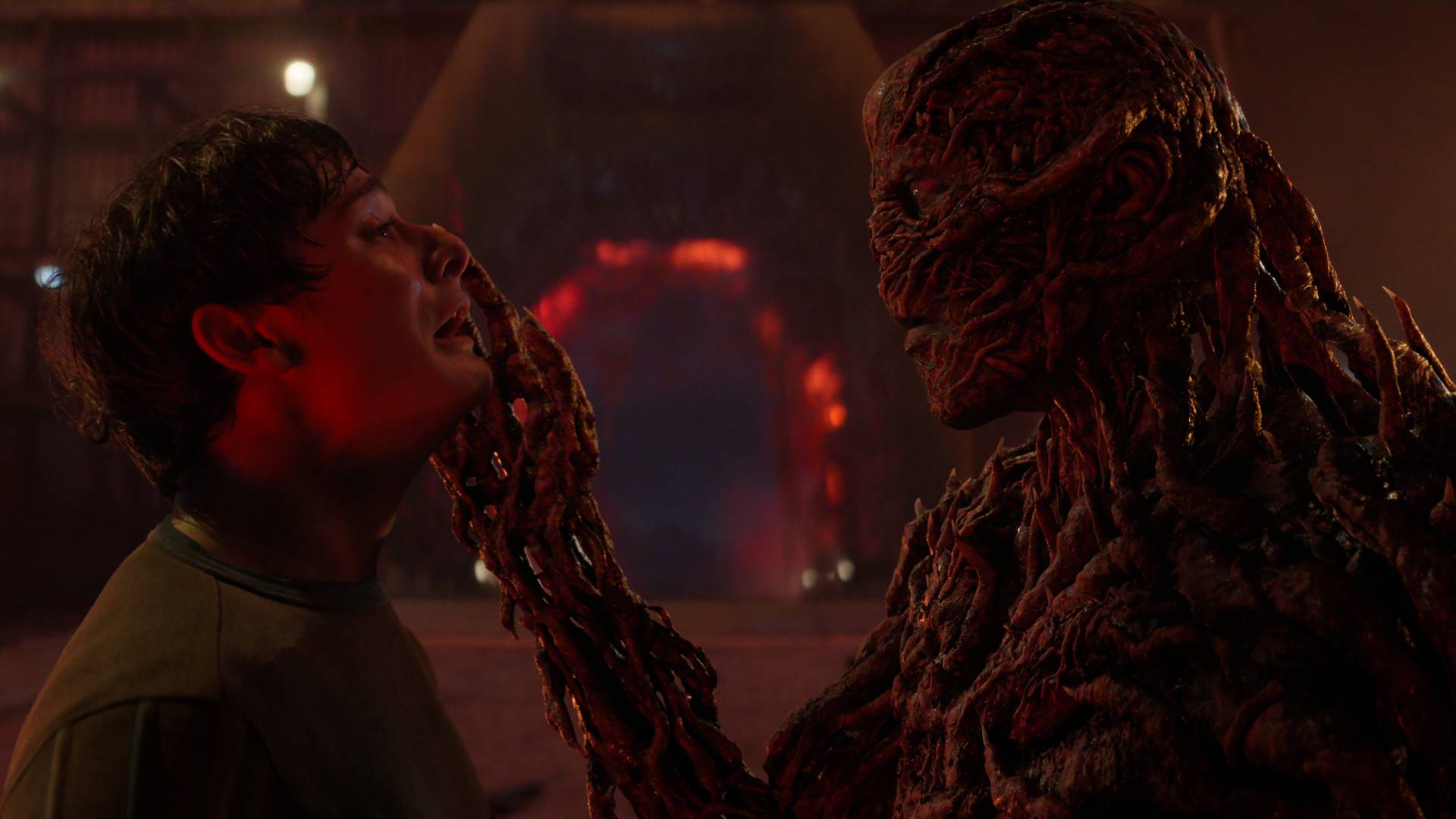10 Episodes That Every Sci-Fi Show* Must Have
Television is surprisingly formulaic; even the most original of shows find themselves using certain dramatic tropes that have been tried and tested by other series over the years. Jayne Nelson has rounded up some of the best examples of TV tropes that you'll know as soon as you see them. Oh, and to be fair, there are also bad examples.
(*If they last long enough)
Can you think of any more? Let us know in the comments...
1 The Christmas Episode
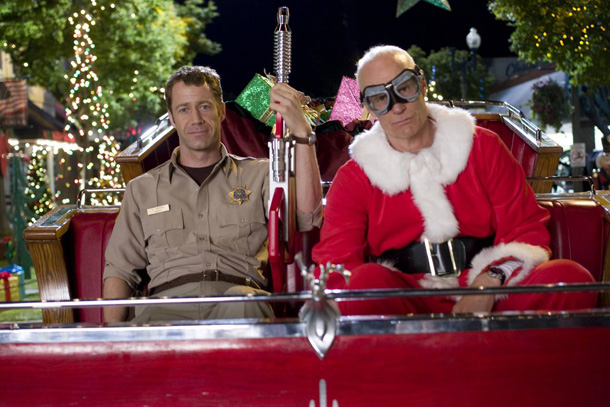
Christmas episodes are a tough sell. First you have to look at your show and figure out if it's the kind of tale that needs a Christmas theme; after all, there's not much in the way of “Ho ho ho-ing” in the new Battlestar Galactica or Game Of Thrones (though Space: Above And Beyond managed it by making Christmas really, really grim…). Then you have to consider whether your characters give a damn about Christmas or not – those workaholic agents from The X-Files weren't that big on it, for example, even though they did get the odd rather out-of-place Yuletide adventure over the years.
And finally, you have to consider whether you can actually pull off a Christmas episode when your show is filmed somewhere hot and sunny. Buffy's “Amends”, for example, filled an entire Californian street with foam masquerading as snow to solve this little issue, but it wasn't very convincing. Honestly, the human race can build a Large Hadron Collider and find proof of “God particles” but we still can't make convincing fake snow? We fail as a species.
And, of course, because we’re talking telefantasy, you need to give Christmas that sci-fi or supernatural twist. Luckily, Christmas is all flying sledges, a fat man who can fit down chimneys, a worldwide 24-hour delivery service, Dickens’s A Christmas Carol , animals that can talk at midnight, magic stars and a mass psychosis that makes people believe other people will eat Brussel sprouts… so Christmas pretty much made for telefantasy. Or horror, in the case of the sprouts.
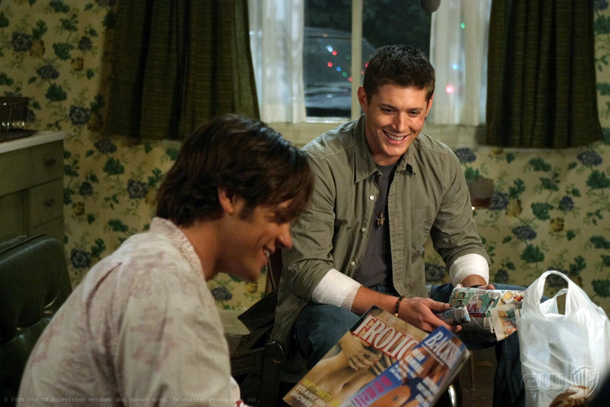
Good Santa: Supernatural “A Very Supernatural Christmas”
The sickest Christmas episode of any show ever, Jeremy Carver's tale of seasonal misery has a deranged pagan Santa Claus throwing innocent people into his sack and squeezing them up chimneys, breaking bones and skulls in the process. Delicious! We even get to see Santa watching porn in one scene – truly, this is the most festive TV episode of all time.
Weekly digests, tales from the communities you love, and more
And despite all the gore, blood and fingernail-pulling (ouch!), the episode ends with Sam and Dean Winchester raising an eggnog toast to the world and exchanging Crimbo gifts. Perfect.
Honourable mention: The Twilight Zone , “Night Of The Meek” focuses on a department store Santa hitting bad times.
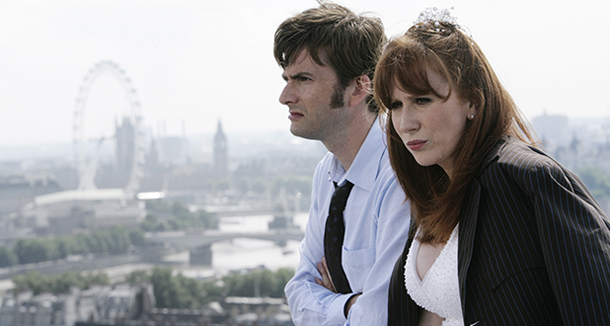
Bad example: Doctor Who “The Runaway Bride”
A decent episode in many respects, but this story is a prime example of the danger of filming a story set in the bleak midwinter when you don't have the resources to film somewhere actually cold .
The lengthy motorway chase in “The Runaway Bride” may actually convince foreign audiences that British trees keep their leaves all year round and the sun never stops shining. Tennant and Tate are visibly blinking in the sunlight at one point. Short of taking everybody to Iceland for filming, however, there wasn't much the BBC could do about it... but it does let down th episodee. You could easily write out all the Christmassy elements and set the show in July without changing the story much (about the only thing that would be a shame to lose is the Christmas star recast as a death star) which in itself says something about “The Runaway Bride”’s failings as a festive outing.
2 The Alternate Universe Episode
What's more fun than watching your favourite TV show? How about watching it when it's set in another reality, where all your familiar cast-members are completely different people doing completely different things?
The Big Daddy of this concept is, of course, Star Trek , whose 1967 episode “Mirror, Mirror” effectively invented the sub-genre on television (and introduced the world to the idea that goatee beards were evil – a fact Futurama explored with relish).
Many, many shows, even the ones that are supposed to be “serious”, have utilised the AU device: whether the episodes in question are set in a parallel universe (all the Star Trek spin-offs have their own episodes set in the “Mirror, Mirror” universe), a world changed by a spell ( Buffy 's “The Wish”) or one created just to make the viewers laugh ( Supernatural 's “The French Mistake”).
Let's face it, watching people we know and love doing crazy, other-universe things is always a scream. And goatees are evil.
Good Universe: Fringe, countless episodes
http://www.youtube.com/watch?feature=player_embedded&v=3ieSxp707X4
Bit of a cheat, this, because Fringe doesn't actually have a single AU episode. Instead it has many of them, all dotted throughout the series, right up until eventually they become absorbed into the main show and we flick back and forth with gleeful abandon.
At first we merely had glimpses and hints of this other world until we hit the penultimate episode of season two, “Over There Part 1”, which was set entirely in another dimension and even had its own set of opening titles.
This new dimension featured a red-headed Olivia, characters who were dead in our world running around as though nothing had happened, and an alternate, totally sane Walter who became known as “Walternate”. For puns like that, Fringe deserves all the awards. Ever.
Honourable mention: Red Dwarf , which piled on AU episodes as though they were going out of style, and deserves a mention for Ace Rimmer, if nothing else
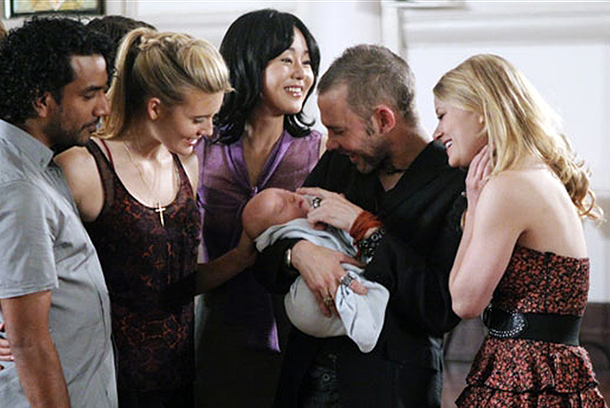
Bad universe: Lost season six
Across the first five years of Lost , viewers had become accustomed to the show giving us flashbacks to times past and then flash-forwards to times future. The sixth season did something drastic, flashing sideways to show a brand-new, parallel universe in which all our beloved characters had entirely different lives that had very little to do with what was going on in the main plot.
While some of it was interesting (Sawyer as a cop?), ultimately it proved to be completely pointless in the grand scheme of things as we realised all the characters were dead anyway and we'd simply been watching the writers pissing about. Proof that while AU storylines can be fun, there really needs to be a point to them.
3 The “Somebody Dies” Episode
Because drama doesn't get more dramatic than when a character carks it, does it?
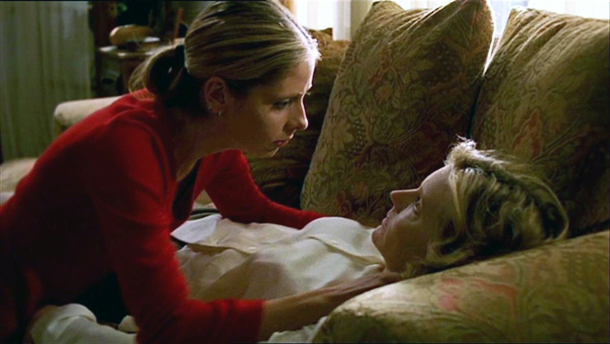
Good example: Buffy The Vampire Slayer “The Body”
Buffy loses her mum – not to a vampire or a demon, but to an ordinary medical condition that strikes without warning. It's the shock of the mundane; a death that hits out of the blue, as death so often does in real life. Written and directed by Joss Whedon, “The Body” is a masterclass in acting, pacing and even sound design, which is given extra poignancy by the now-famous speech Anya gives in which she just can't understand why Joyce was there one minute and now she isn't.
Extraordinary television.
Honourable mention: Blake's 7 's final episode, which made death the biggest deal of all.
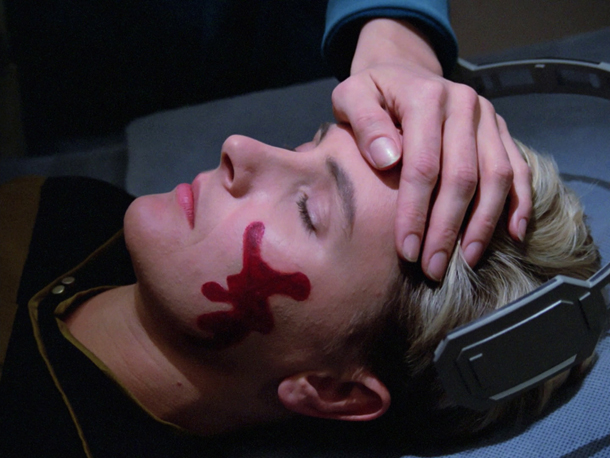
Bad example: Star Trek: The Next Generation “Skin Of Evil”
It's always awkward when an actor decides to leave a TV show early, particularly when it hasn't been around for long. Do you write their character out without a word and hope nobody notices, or do you give a cast member a big send-off that might seem a little out of proportion to how well we know them?
Tasha Yar's death in season one of TNG was a good example of this: after 23 episodes all we really knew about the Enterprise's security officer was that she liked to shout a lot and point her gun (oh, and she once bonked Data). Her death at the hands of an oil-monster was deliberately chosen to be senseless – good for drama – but her holographic goodbye at the end of the episode was over-wrought and, frankly, a little unbelievable (did she record it that morning, before she went on the mission? Be prepared and all that...).
Worst of all, poor Denise Crosby had to suffer the indignity of having to lie on a bed, supposedly dead, with a huge splodge of makeup on the side of her face that undermined every ounce of tension or drama from the action. Audiences spent most of her death scene wanting to lick a tissue and wipe the splodge off her cheek.
4 The Halloween Episode
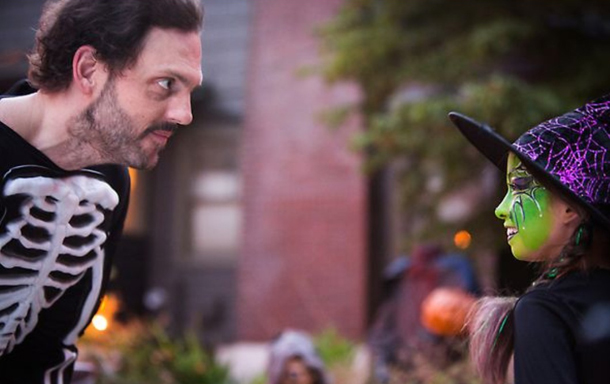
Television shows, even mainstream ones that don't usually dabble in fantasy, quite often pull out all the stops to show weird stuff happening around 31 October. Whether it's squeezing the cast into outrageous costumes or investigating a murder case that seems Satanic ( Hawaii Five-O did this just a few weeks ago), Halloween is an excuse to let rip.
Unless you're Buffy, that is. In her universe, all the monsters hate Halloween and stay indoors, making it the one day of the year where nothing happens. Brilliant.
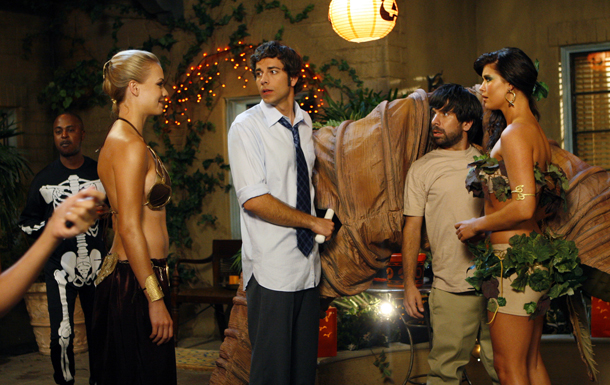
Good example: Chuck “Chuck Vs The Sandworm”
Forget the plot. What makes this the perfect Halloween episode are the costumes, from Sarah's Princess Leia slave girl outfit to Awesome and Ellie as Adam and Eve. Best of all is Chuck and Morgan's epic decision to come to the party dressed as a sandworm from Dune – be still, our geek hearts. Happy Halloween!
Honourable mention: Community , “Epidemiology” features a zombie outbreak during a costume party.
Bad example: Star Trek “Catspaw”
http://www.youtube.com/watch?feature=player_embedded&v=7k5QPY_Hk7I
A word to the wise: if you want to make a genuinely creepy TV episode set in a haunted castle in which your cast is menaced by, among other things, a giant cat, make sure you have more than $3 in your budget. Absolutely dire. Kudos goes to Shatner and company for at least attempting to look concerned amidst all the bollocks.
5 The Flashback Episode
The Flashback Episode used to be something different. It used to be the universally-reviled Clips Episode (aka, the Money’s Run Out Episode), such as Star Trek: The Next Generation 's dreadful “Shades Of Grey”. In these, an episode would be created using clips of footage earlier shows, framed by some limp storytelling device, usually something along the lines of, “His brain is disintegrating… we must reassemble his psyche with his most potent memories… except the ones involving sex because we never filmed those.”
But such shows have fallen out of favour with the advent of the box-set. We can see all those clips whenever we want now. Which was a pity for Stargate SG-1 and Atlantis which had actually, finally figured out how to do clips shows in interesting ways…
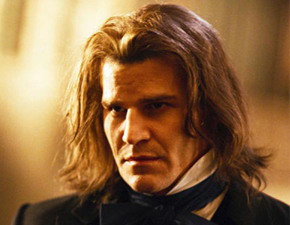
Anyway, the Flashback Episode in its new form was popularised in telefantasy by Lost , which turned the “original” flashback into an art form. Now they're almost a pre-requisite for any show, whether as part of its very structure ( Revolution , Once Upon A Time ) or the occasional one-ff episode here and there ( Fringe ).
Usually they're fascinating: the chance to explore a character's origins and a way of understanding the events currently unfolding on screen. However, it should be noted that there's one thing every flashback episode HAS to have to make it effective, and that's decent wigs. One crappy wig and the whole kit and kaboodle unravels. (Naturally we're referring to Angel's terrible barnet in his many flashbacks in both Buffy and Angel, but it also applies to characters from The Vampire Diaries and many, many more...)
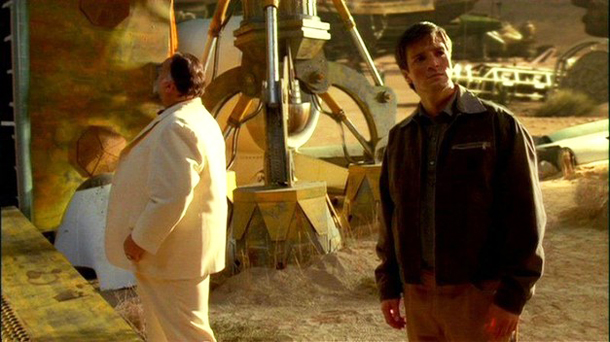
Good example: Firefly “Out Of Gas”
Captain Reynolds staggers around the Serenity, leaving a trail of blood behind him as he tries to fix her engine and save himself and his crew. As he does so, we see the history of the ship and its crew in his mind's eye, discovering how his little gang of space-faring rejects got together.
The writing is sublime – take a bow, Tim Minear – and each past event reflects beautifully on what we're watching now. The little details are a delight (such as Zoe taking an instant dislike to her future husband, or the ship originally having a different engineer), but it's the final flashback, with Mal spying the Serenity for the first time and instantly falling in love with her, which hits the spot so hard it leaves a delicious bruise.
Honourable mention: Fringe 's “Peter” tells the story of how Peter came to be in our universe... and features some of the best anti-ageing makeup we've ever seen.
Bad example: Star Trek: Enterprise “These Are The Voyages”
http://www.youtube.com/watch?feature=player_embedded&v=QkecbH6an0w
Was the entire run of Enterprise nothing more than a hologram simulation being run by Troi and Riker? Take from this final scene what you will, but by bringing in two stars from another show, Enterprise 's finale was robbed of something fundamental: its own identity.
6 The Crossover Episode
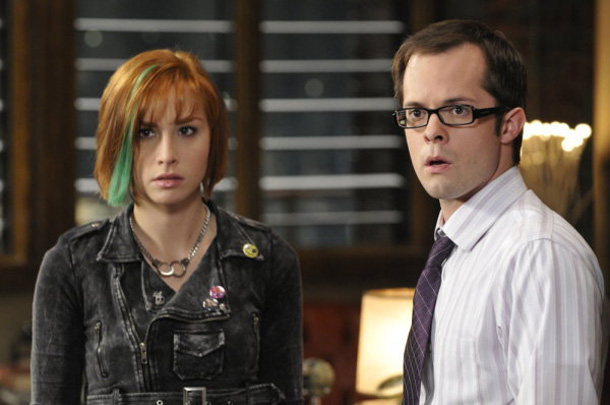
Crossovers aren't as common as you'd imagine in the sci-fi world, although big shows such as CSI and Law And Order use this device a lot. When they do happen, however, they're usually really interesting – not only do you get more characters you know and love, there's also the chance you'll like the new guys and go off and watch their show too, right?
Recent examples in telefantasy include the casts of Warehouse 13 and Eureka playing pop-up on each other's shows, and even Alphas has got in on their act (they're all Syfy shows, so why not? Though Alphas feels like a completely different universe). The X-Files is the king of this trend, however: not only did the series crossover with spin-offs The Lone Gunmen and Millennium , it spoofed the TV show COPS in “X-Cops”, saw Mulder and Scully appearing in The Simpsons , and one episode featured Detective Munch (Richard Belzer) from non-genre show Homicide . And then there was that throwaway mention of the X-Files in Fringe …
[Random fact unrelated to this feature: this wasn't the only crossover Munch appeared in, either; he also showed up in The Wire , Arrested Development , Law And Order , The Beat , Law And Order: Trial By Jury , 30 Rock , Jimmy Kimmel Live , Sesame Street (as a Muppet!) and even gets a mention in BBC show Luther . These days he's a regular on Law And Order: Special Victims Unit . He's in a class of his own!]
Good example: Star Trek Deep Space Nine “Trials & Tribble-ations”
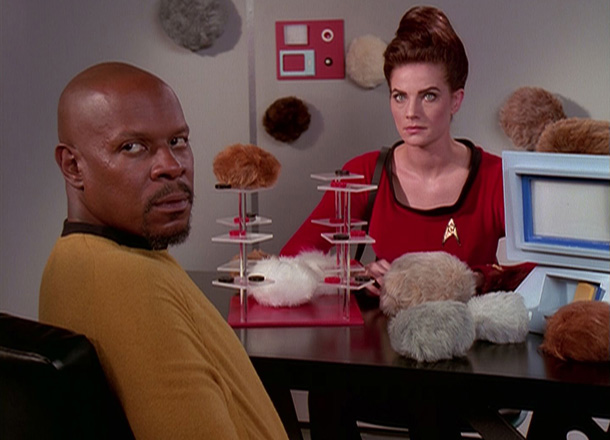
Deep Space Nine may have been the offspring of '60s Star Trek but they were entirely different shows, both made and set in completely different time periods. This didn't stop a fabulous crossover to celebrate the 30 th anniversary of the franchise, in which the crew of DS9 travelled back in time and found themselves interacting with the classic show's cast.
The CGI is relatively seamless, the script fondly funny, and there's genuine joy to be found while watching the original series episode “The Trouble With Tribbles” nowadays because you can't help but look for the DS9 cast in the background. As far as crossovers go, “Trials And Tribble-ations” is probably one of the strangest ones ever made, but it really works.
Honourable mention: Doctor Who, “The Stolen Earth” and “Journey's End”, which feature the stars of Torchwood and The Sarah Jane Adventures in their parent series.
Bad example: Buffy The Vampire Slayer “Pangs”
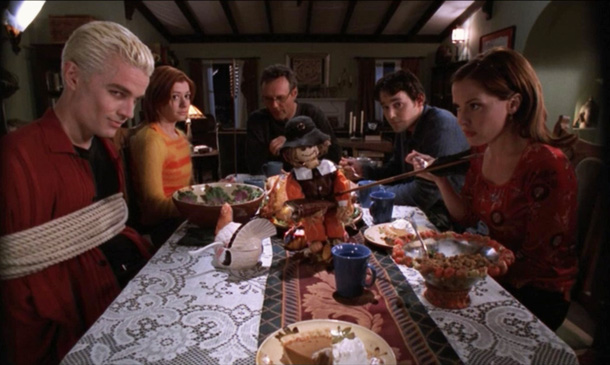
The other half of a double crossover event with Angel (that show’s episode, “I Will Remember You”, is miles better), “Pangs” is a bit of a damp squib in which Angel lurks in some bushes like a creepy lurker and barely interacts with the action at all. He's drawn back to Sunnydale, and thus into the show, because he hears the Slayer is in danger; but the drama's ruined because they made the episode a comedy, and Angel ends up looking like a stalker. Rubbish! If you excuse Spike being hilarious, that is.
7 The Quirky Self-Aware Episode
http://www.youtube.com/watch?feature=player_embedded&v=OyCxEnyITu4
The first rule of drama is that you never break the fourth wall and reveal to the audience that you know they're there... but some shows delight in doing just that. If they're being a little more reserved, however, they may just make an episode that plays with the formula a little, showing off in-jokes galore or generally mocking the lead characters.
The X-Files was particularly good at this – it loved to mock Mulder – while Hercules and Xena probably take the prize for the shows that did it the most. One episode of Hercules , set in the present instead of Ancient Greece, even featured the characters whistling the show's theme song while having a pee... (see above).
Good example: Supernatural “The French Mistake”
You have to hand it to Supernatural ; they don't do things by halves. The Winchester brothers are thrown into a parallel universe in which they discover they're really actors named “Jared Padalecki” and “Jensen Ackles” on a TV show called “Supernatural”. Their weapons are made of rubber, their precious car doesn't work properly and, worse, “Jared” appears to be married to evil demon Ruby (played by Genevieve Cortese, Padalecki's real-life wife). It's rib-ticklingly funny, but the best thing about it is that the show gets away with it. Somehow.
Honourable mention: The X-Files , “Hollywood, AD”, in which Mulder and Scully discover a film is being made of their lives.
Bad example: Xena “Send In The Clones”
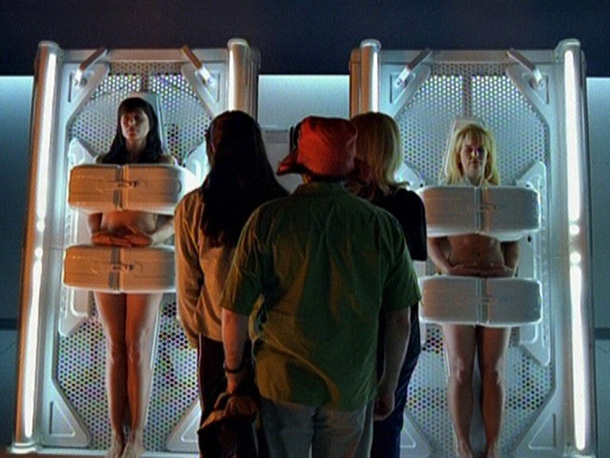
For starters, this is a clip show, which is always a sure sign the quality's going to be a bit duff. Unfortunately it's also one of several Xena episodes that are comedies set in the future – a sad example of taking a joke and stretching it too far to be funny. The story follows three Xena fans as they tangle with modern-day clones of Xena and Gabrielle. Awful.
8 The Outsider's POV Episode
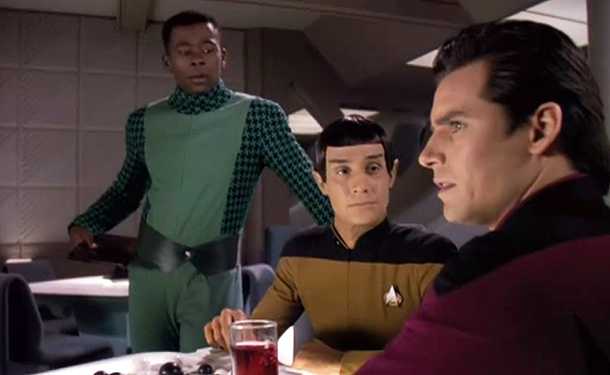
Sometimes you need to see a show through fresh eyes. So why not bring in someone to do that for you? This trend can also be named “The Lower Deck Episode” after Star Trek: The Next Generation 's “The Lower Decks”, which used the viewpoint of some ensigns to tell the plot.
Good example: Doctor Who “Blink”
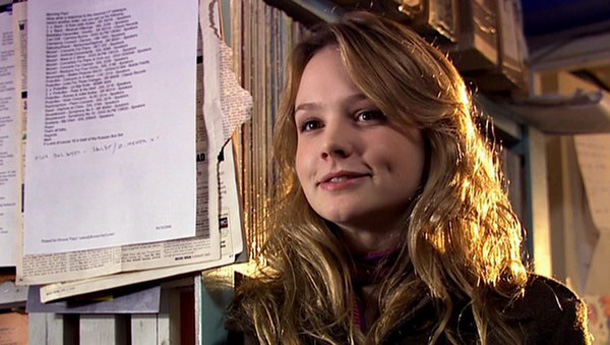
The episode that introduced us to the wonderful, glorious, should-have-been-a-companion Sally Sparrow, who then buggered off to Hollywood and never turned up on Doctor Who again. Curse you, Carey Mulligan!
Honourable mention: Supernatural , “Ghostfacers”, in which Sam and Dean Winchester are filmed by a group of frankly rather crap ghost hunters.
Bad example: Supernatural “Bitten”
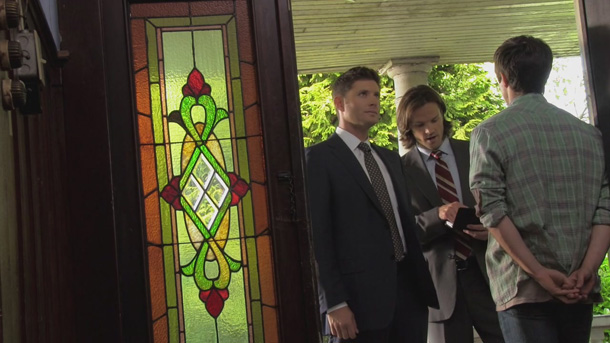
Which lifts the concept of found footage superhero flick Chronicle shamelessly, but replaces telekinesis with lycanthropy and "interesting characters" with "complete numpties". Supernatural does its high concept episodes better than almost any other show, which is why it's featured so frequently in this list, but "Bitten" is rare misfire. It isn't really their fault, but the fact you'll spend half of the episode shouting "Why are you still recording?" at the characters doesn't help either. Plus, they're smelly student bums, and nobody likes a smelly student bum.
9 The “Good Guy Goes Bad” Episode
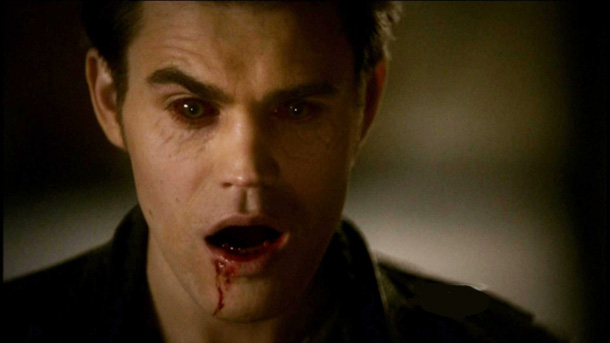
Does this one need explaining? Probably not. Angel turning into Angelus pretty much has the market cornered on this trope, but here are some other examples...
Good example: Battlestar Galactica “Kobol's Last Gleaming Part 2”
Battlestar Galactica played around with characters' loyalties like a kid taunting a fly after ripping off its wings: “You're a human! You're a Cylon! Some of you are nicer than the humans! You're a bad guy again! Now you're a Cylon!”
Things got a little tiring towards the end, but right at the start, back when BSG was shiny and new, the Boomer’s betrayal was a huge, devastating shock. We realised she was a Cylon just as she did, and screamed at our TVs with an Anakin Skywalker-style “Noooooooo!” as she shot Adama. Fantastic telly and no mistake.
Bad example: Angel, season four
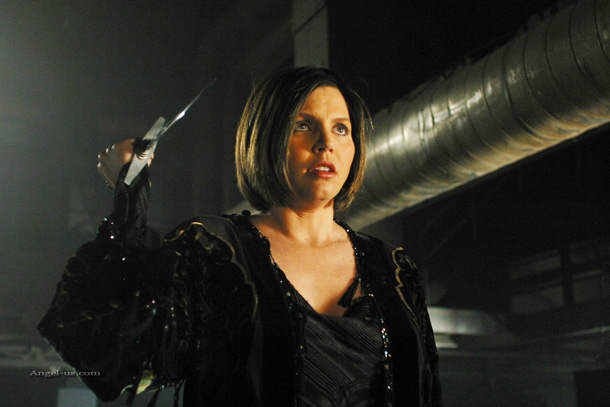
Cordelia was one of Angel 's most-loved characters, which made her actions in season four all the more distressing for the show's loyal viewers. To cope with Charisma Carpenter's real-life pregnancy, a storyline was developed in which she became possessed with an evil force and consequently went on to seduce Angel's son and birth a “baby” that was out to destroy the world.
Sounds relatively okay on paper, but on screen Cordy's affair with Connor was the definition of “icky” and her scenes throughout the season was hugely unsatisfying. And then she didn't return as the old Cordy until season five's “You're Welcome”... which killed her off! Pffffffft.
10 The Groundhog Day Episode
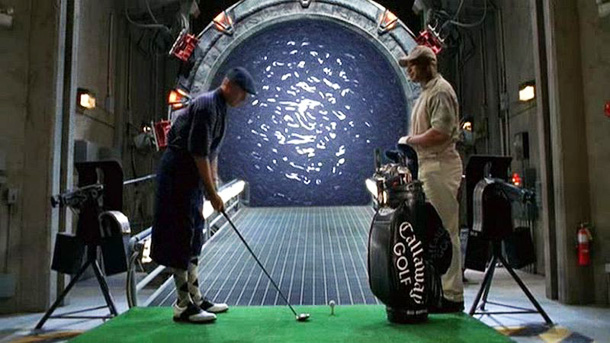
The Groundhog Day Episode, also known as the Sliding Doors Episode or the more literal Time Loop Episode, has even appeared on non-genre shows such as Frasier . We get to see multiple variations of a single day in somebody's life, often forced on the individual by events outside their control, such as Sam Winchester being compelled to live the same day time and again thanks to a spell in Supernatural 's “Mystery Spot”.
Episodes like this tend to be brave – you can tire your audience by doing the same thing over and again – but usually the writing's of a fine enough standard that it can bear the repetition. There was even a show named Day Break which took this format as its starting point and made an entire series out of it. Day Break was great, but sadly nobody watched it and it was canned. ( Still mourning that one. Not bitter at all – ed .)
Good example: Community “Remedial Chaos Theory”
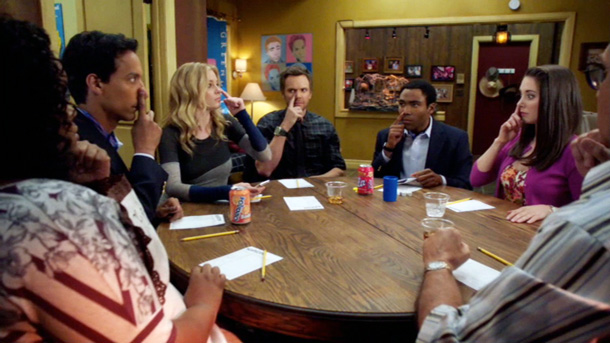
Nominated for both an Emmy Award and a Hugo Award, this episode of genre-bending sitcom Community sees the cast throwing a housewarming party which then splits into seven different timelines with the throw of a dice. It's devastatingly clever, deliciously funny and features the cheekily self-aware Abed pondering what would have happened in all the other timelines while his companions stare at him in bemusement.
Honourable mention: Stargate SG-1 , “Window Of Opportunity”, sees Colonel O'Neill and Teal'c stuck in the same day over and again. O'Neill, after playing golf a bit (hitting balls into the Stargate), finally snaps and snogs Carter. Fans rejoiced.
Bad example: Buffy The Vampire Slayer “Life Serial”
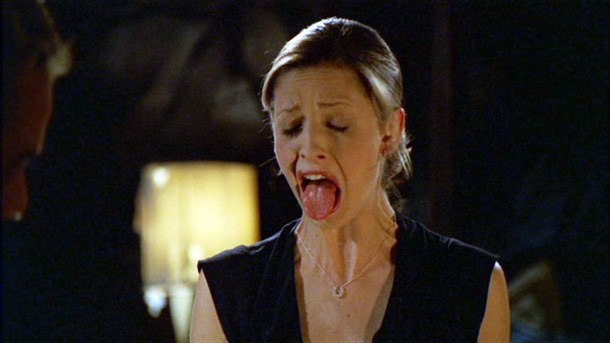
Season six of Buffy suffered from too many episodes such as this one, in which comedy is used so liberally that events actually end up being un -funny. Thanks to the doings of the Geek Trio, Buffy gets stuck in a time loop at The Magic Box that keeps her fighting a dismembered mummy hand over and over again. It wasn't funny the first time.
There is one good thing about this episode, however: the Geeks actually reference other time loop episodes as they discuss their plan. Andrew mentions Star Trek: The Next Generation 's “Cause And Effect” and Warren brings up The X-Files episode “Monday”. Both were way better than this...
SFX Magazine is the world's number one sci-fi, fantasy, and horror magazine published by Future PLC. Established in 1995, SFX Magazine prides itself on writing for its fans, welcoming geeks, collectors, and aficionados into its readership for over 25 years. Covering films, TV shows, books, comics, games, merch, and more, SFX Magazine is published every month. If you love it, chances are we do too and you'll find it in SFX.

